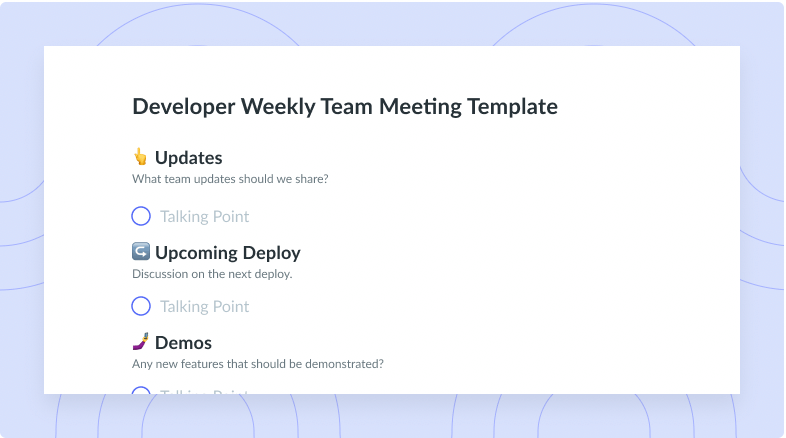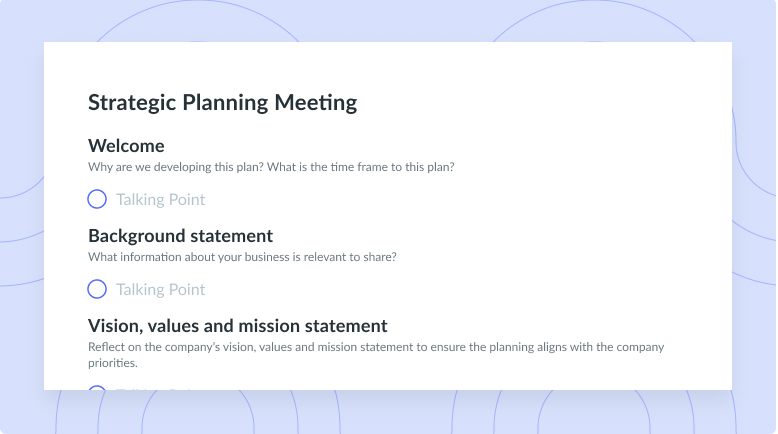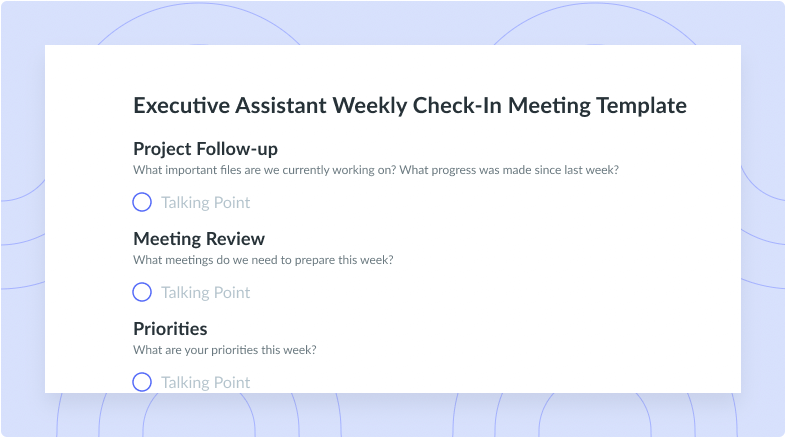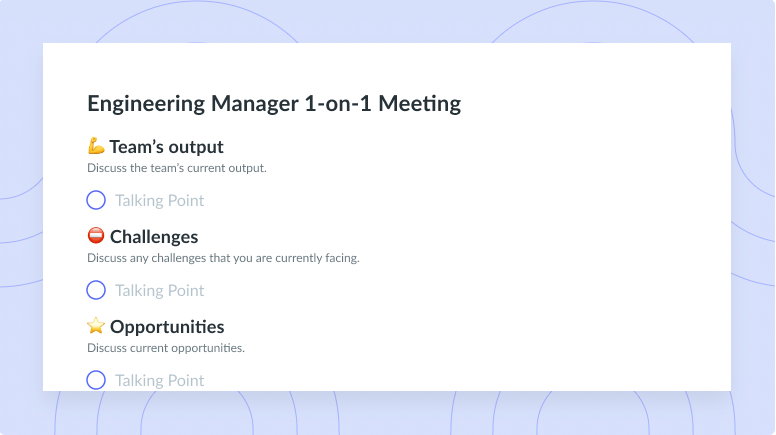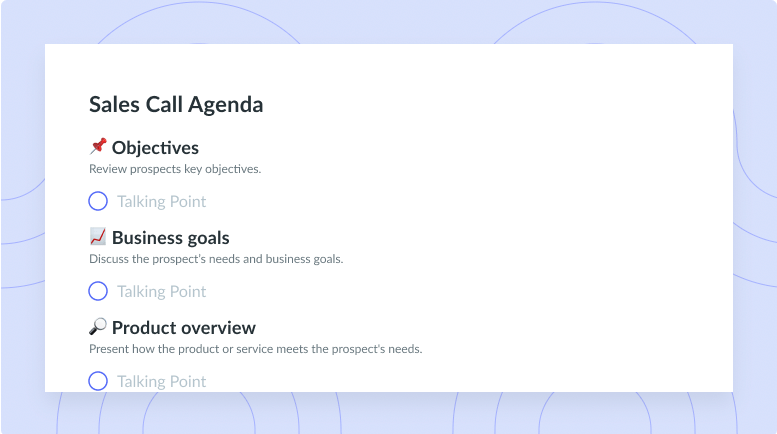Bad Meetings: Common Signs and How to Avoid Them
Check out these bad meeting red flags and some great tips on how to avoid unproductive meetings from taking place in the future.
A good meeting will leave participants feeling accomplished, satisfied and on the same page. All too often though, unproductive meetings take place, where most participants feel as if their time has been wasted. If this happens consistently, it can become extremely frustrating and with time, employees will become disengaged and much less motivated. The meeting leader needs to be aware of bad meetings and identify where it is that the meeting went wrong, in order to make improvements for next time. Because it’s possible to bounce back from a bad meeting with some effort and guidance, we’ve put together some signs of a bad meeting and how you can avoid them.
What is a bad meeting?
A bad meeting is one that is not productive. Unproductive meetings are “bad” because they use your team’s time that could be focused towards achieving their responsibilities and goals. Bad meetings are not only a poor use of time and resources, but they affect team morale. You’ll know if you’ve just been to a bad meeting because you leave feeling unaccomplished, frustrated and drained of energy, whereas any good and productive meeting will leave you feeling energized and inspired. You can also tell you’re in a bad meeting from the team’s non-verbal cues, as they look uninterested, distracted, make poor eye contact, look tired and bored.

Only delightful meetings
Productive meetings are possible with a collaborative meeting agenda tool, like Fellow, that tracks action items, feedback and more.
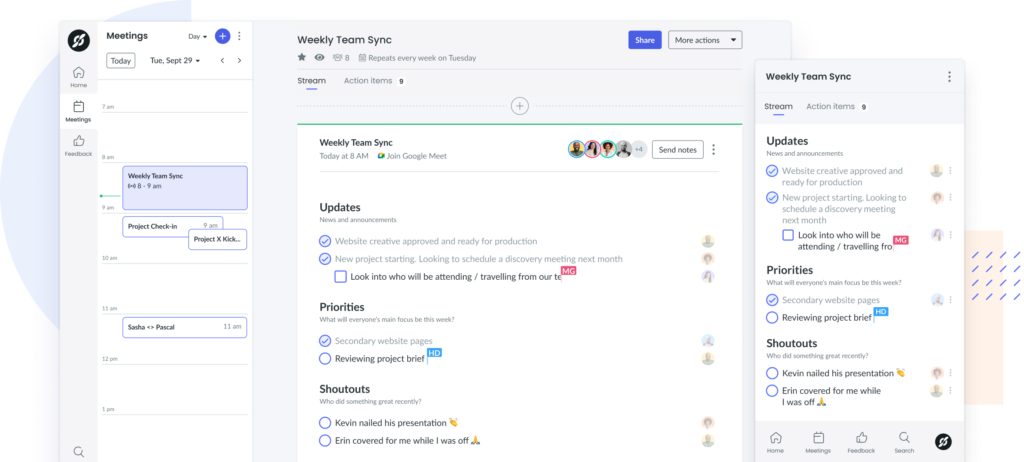
Bad meeting red flags
Rambling without a clear purpose
If your meeting leader (or anyone presenting) is rambling without a clear purpose, it’s clear that they’re completely unprepared. When teams use a specific meeting agenda, it reduces wasted time because it keeps the speaker on topic and on time. If you don’t know why someone is speaking about something, it’s likely that they’re not sure either. Don’t be afraid to stop and politely ask the person about the relevance of their discussion.
Distractions during the meeting
If you see that meeting participants are distracted, whether they’re on their devices, laptops or simply getting off-track from the conversation, this is a sign of a bad meeting. It’s important to set some ground rules on meeting etiquette and outline clear expectations from your meeting participants so that everyone is paying attention and is ready to participate.
Participants are unprepared
Being unprepared takes many shapes and forms. This is definitely a sign of a bad meeting because if your participants aren’t prepared, they’re not going to effectively contribute to the conversation. The meeting leader needs to ensure that the agenda and any supporting documents are sent well in advance so that participants have the opportunity to be prepared in the first place. If this has been done and participants still aren’t ready to discuss their work, progress and updates, the manager needs to have a discussion with them to make their expectations more clear and so that everyone’s time is better respected.
No closure in the meetings
If you don’t feel like there is any closure at the end of your meeting and it is unclear what has been accomplished, you’ve probably just attended a bad meeting. A good meeting will come to a decision, consensus or clearly outline what needs to be accomplished by the next meeting. If this is missing, it means that the meeting has not been productive, seeing as there’s no true outcome. It’s important to set a clear purpose for the meeting so that you and the team know exactly what you’re working towards.
Meeting is dominated by one person
If only one person is speaking for the duration of the meeting, then you’re not in a meeting, this has become a presentation… This is a sign of a bad meeting because if other people’s thoughts and opinions aren’t being heard, there is an organizational bias being built. Everyone should feel comfortable and safe to share their insights, comments and questions during meetings.
Starting or ending late
Punctuality is an important sign of respect. If your meeting is starting or ending late, you are disrespecting the time of all of the people who have committed to being on time and available for it’s said duration. The expectation for punctuality should be a set precedent with your team and something that the meeting facilitator needs to lead by example.
7 best practices to avoid bad meetings
- Always use the right tools for the job
- Show up prepared
- Set a standard of meeting behavior
- Send the agenda in advance
- Keep a tight schedule
- Encourage meeting feedback
- Always end with action items
1 Always use the right tools for the job
It’s extremely important to ensure that you’re using a meeting management tool for organizational purposes and also to be as transparent as possible with your team members. A tool like Fellow allows you to build collaborative agendas, record meeting notes and take note of action items, all in real-time so that you and your team are always on the same page. Fellow also allows you to give and receive feedback so that there is transparency across the board.
2 Show up prepared
First, the meeting leader needs to enable all of the participants to be prepared. For this to be possible, the meeting agenda needs to be sent well in advance, any supporting documentation needs to be circulated, action items need to be updated and individuals need the opportunity to make suggestions about topics that they would like to cover. Showing up prepared means that there is a clear meeting purpose or meeting goals that you and your team are actively working towards.
3 Set a standard of meeting behavior
Well before your meetings take place, you should host a separate discussion that sets a standard for meeting behaviour, making clear what is okay and what’s not. If meeting behaviour has been an issue in the past and it persists, you should work with HR to create more formal documentation that outlines meeting etiquette, so that employees have a legitimate guideline to refer to and follow. Be strict on these standards- when something is violated, it needs to be addressed and mitigated, otherwise it won’t seem like a big deal.
4 Send the agenda in advance
It’s extremely valuable to send a meeting agenda ahead of the meeting. It’s even better to create a meeting agenda template for your recurring meetings, rather than feeling the pressure to start from scratch before each meeting that takes place. It can feel especially overwhelming to come up with a unique meeting agenda as well as talking points every single week. The key is to find a template that’s effective and well-received by your team so that you can continue to reuse it week to week. Fellow has a multitude of meeting agenda templates that you can try out so that you don’t need to waste valuable time reinventing the wheel.
5 Keep a tight schedule
Keep a super tight schedule. Don’t let meeting agenda topics drag on because they’re bound to end up getting off topic as well. The best way to keep on schedule is to allocate a specific amount of time to each meeting agenda item so that once you approach the cut-off time, everyone acknowledges and accepts that the time is up. Whatever you weren’t able to cover can be brought up another time, whether it’s a separate discussion or a quick email after the meeting.
6 Encourage meeting feedback
A healthy and strong company culture starts with giving and receiving meeting feedback. Fellow enables you and your team to share real-time feedback on meetings, projects, and performances. It’s a great idea to leave some time at the end of your meeting to ask your team for feedback on how the meeting went and what you can do to make it even more effective in the future. If you don’t have time, shoot your team a quick meeting feedback survey after the meeting has taken place so that you can pinpoint areas of improvement and areas of strength.
7 Always end with action items
Always end your discussion with assigning meeting action items. Be really specific when you do so, assigning a specific person to a specific task, with a specific due date. This way, at each meeting you can go over exactly what has been accomplished, what is in progress and which action items may need to be slightly modified as things come up. This is going to hold each person on the team accountable and responsible for their tasks and make team members aware of exactly what it is that their colleagues are working on.
Parting advice
Unproductive meetings happen far too often and are extremely frustrating to attend, as they take away from our time and energy. It’s important for the meeting leader to pinpoint exactly where these unproductive meetings are going wrong, whether it’s the structure of the discussion or the actual meeting room that’s just not cutting it. Think through if you’ve been experiencing the red flags of bad meetings that we’ve discussed in this article and then consider implementing these ways to avoid unproductive meetings in the future.
As always, it’s a great pleasure seeing you on the Fellow Blog! Until next time.










